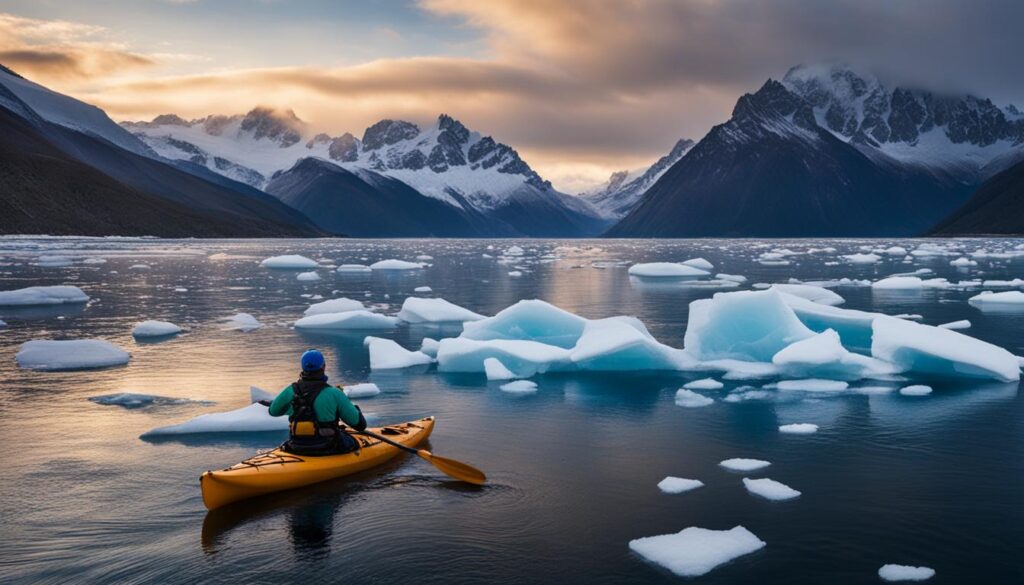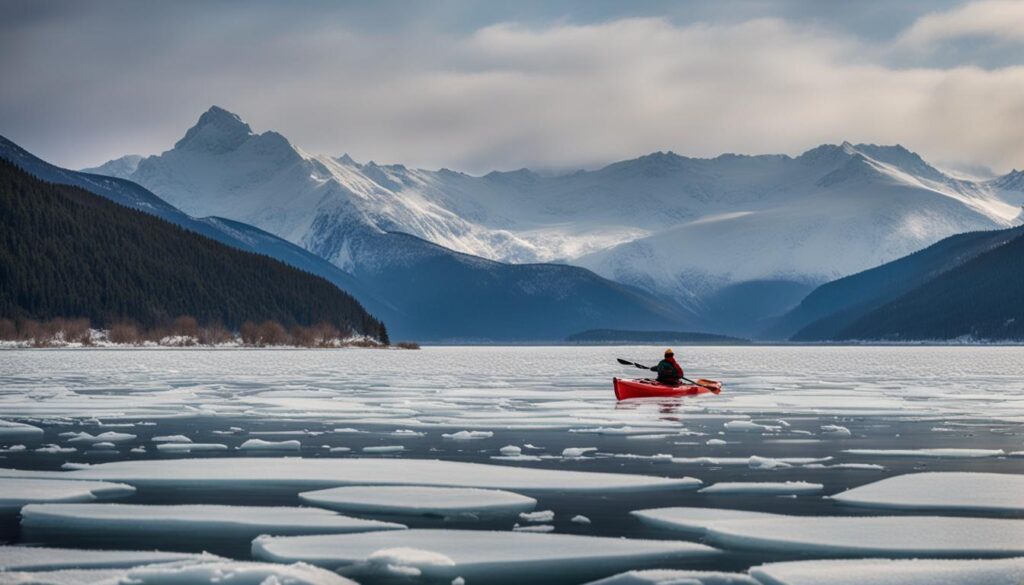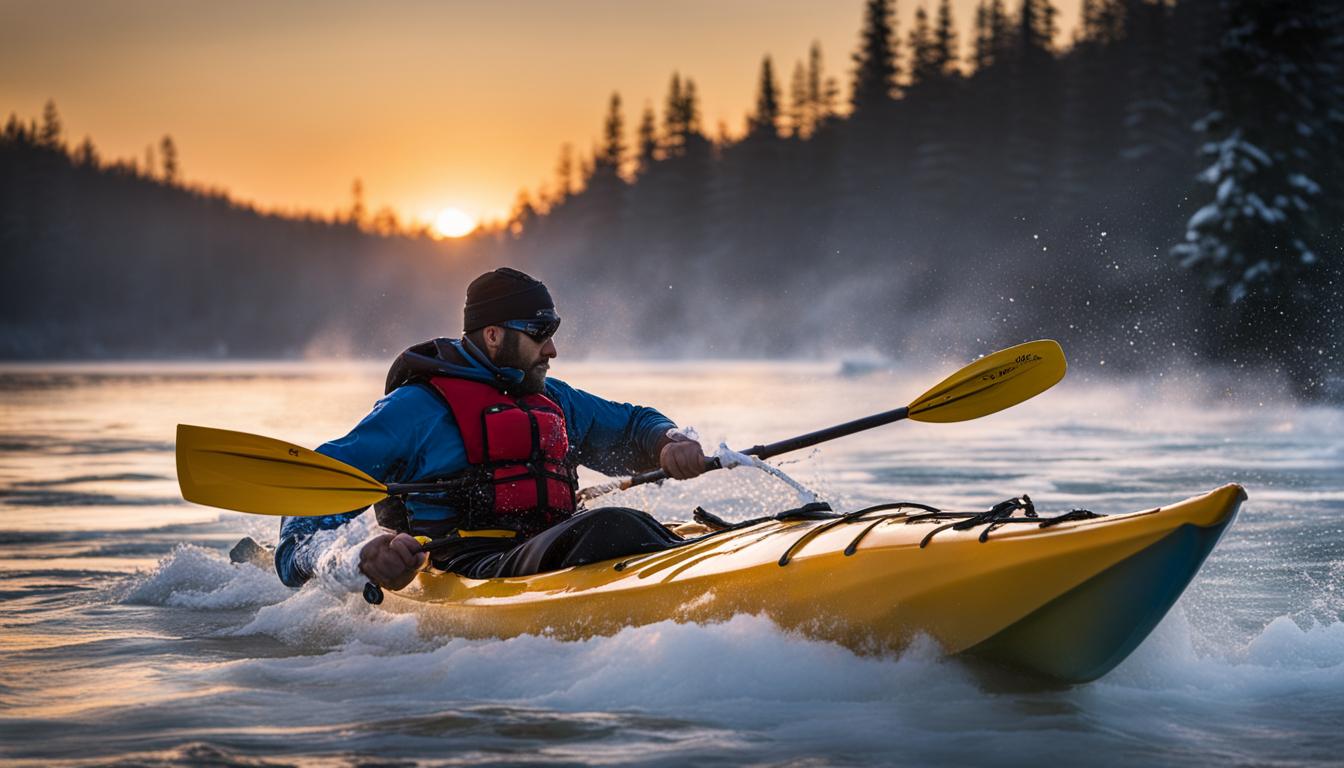Welcome to our comprehensive guide on how temperature can impact the performance of your kayak. Whether you’re a seasoned paddler or just starting out, knowing how temperature affects your kayak is crucial for a safe and enjoyable experience on the water. In this article, we’ll explore the various ways in which temperature can affect your kayak’s buoyancy, stability, and overall performance. So let’s dive in and discover the fascinating relationship between temperature and kayak performance!
Key Takeaways:
- Temperature can have a significant impact on kayak performance, affecting buoyancy and stability.
- Kayak materials respond differently to temperature changes, so understanding their thermal properties is important.
- Cold water kayaking requires extra precautions to ensure comfort and safety.
- Thermal insulation techniques and appropriate clothing can help maintain optimal performance in different temperature conditions.
- Extreme temperatures can affect kayak storage and maintenance, so regular inspection and proper storage are essential.
Comfort and Safety in Cold Water Kayaking
When it comes to kayaking in cold water, comfort and safety should be your top priorities. Cold water can pose serious risks, including hypothermia, so it’s important to understand how it can affect kayak performance and take the necessary precautions. Here are some valuable tips to help you stay safe and comfortable while paddling in cold conditions.
1. Dress appropriately
Wearing the right clothing is crucial when kayaking in cold water. Opt for a wetsuit or a drysuit, depending on the water temperature. These garments provide insulation and help to retain heat, keeping you warm while you’re on the water. Don’t forget to wear a hat and gloves to protect your extremities from the cold.
2. Use proper safety gear
Invest in a good quality personal flotation device (PFD) that is suitable for cold water conditions. Make sure it is properly fitted and worn at all times while kayaking. A PFD will not only keep you afloat but also provide an extra layer of insulation against the cold water.
“Kayaking in cold water requires proper preparation and gear. Always remember to dress appropriately, wear a PFD, and take regular breaks to warm up if needed.” – Experienced kayaker
3. Stay hydrated and fuel up
It’s easy to forget to drink water when you’re immersed in the cold, but it’s essential to stay hydrated. Dehydration can have adverse effects on your body, making it more susceptible to the cold. Additionally, fueling your body with high-energy snacks can help maintain your core temperature and overall performance during your kayak adventure.
| Winter Kayaking Performance Tips | Benefits |
|---|---|
| 1. Dress appropriately | Protection against hypothermia |
| 2. Use a suitable PFD | Extra insulation and buoyancy |
| 3. Stay hydrated and fuel up | Maintain core temperature and energy levels |
Following these tips will help you enjoy your cold water kayaking experience while prioritizing your comfort and safety. Remember, it’s always better to be prepared and take precautions rather than risking your well-being in extreme conditions. Stay warm, stay safe!

The Impact of Temperature on Kayak Performance
Temperature plays a crucial role in the performance of kayaks. Understanding how temperature affects kayaks is essential for paddlers who want to optimize their experience on the water. In this section, we will explore the heat retention properties of kayaks, the effect of temperature on kayak buoyancy, and the thermal insulation techniques that can help maintain optimal performance in different temperature conditions.
Heat Retention in Kayaks
The heat retention properties of kayaks can significantly impact their response to changes in temperature. Kayaks made from different materials can have varying levels of heat retention. For example, kayaks made from polyethylene tend to retain heat better than those made from fiberglass or carbon fiber. This means that polyethylene kayaks may feel warmer in cold water conditions, providing a more comfortable paddling experience.
Additionally, the color of the kayak can also affect its heat retention. Dark-colored kayaks absorb more heat from the sun, which can be beneficial in colder conditions but may cause discomfort in hotter climates. Light-colored kayaks, on the other hand, reflect more heat and can be a better choice for paddling in warm weather.
Temperature Effect on Kayak Buoyancy
The temperature of the water can have a direct impact on kayak buoyancy. Cold water reduces the buoyancy of kayaks, making them feel less stable. This can affect the overall performance and maneuverability of the kayak. Paddlers should be aware of this when paddling in cold water conditions and take necessary precautions to maintain stability.
On the other hand, warm water increases buoyancy, making the kayak feel more stable. This can be an advantage in warmer climates or during summer months. However, it is important to note that water temperature can vary significantly depending on the location and time of year. Paddlers should always be prepared and adjust their paddling technique accordingly.
Kayak Thermal Insulation Techniques
To maintain optimal performance in different temperature conditions, paddlers can utilize various thermal insulation techniques. One common method is to add insulation to the kayak itself. This can be achieved by using foam padding or insulating materials on the seat and footrest areas. These additions help to minimize heat loss and provide a more comfortable paddling experience, especially in colder conditions.
Another important aspect of thermal insulation is wearing appropriate clothing. Paddlers should dress in layers, including a base layer that wicks moisture away from the body, an insulating layer to trap heat, and an outer layer that protects against wind and water. Wearing a wetsuit or drysuit is also recommended in extremely cold water conditions for added thermal protection.
| Material | Heat Retention | Buoyancy in Cold Water |
|---|---|---|
| Polyethylene | Good | Decreased |
| Fiberglass | Moderate | Decreased |
| Carbon Fiber | Low | Decreased |
By understanding the impact of temperature on kayak performance and implementing appropriate thermal insulation techniques, paddlers can enjoy a comfortable and safe paddling experience in various weather conditions.
Maintaining Performance in Extreme Temperatures
When it comes to kayaking in extreme temperatures, proper maintenance and storage practices play a crucial role in preserving the performance and longevity of your kayak. Whether you’re facing scorching hot summers or bone-chilling winters, taking the necessary precautions will ensure that your kayak remains in optimal condition.
Temperature-Based Kayak Maintenance
Extreme temperatures can have adverse effects on the materials used in kayaks, potentially leading to structural damage over time. To mitigate these risks, it’s essential to follow temperature-based kayak maintenance practices. Regular inspection of your kayak is the first step in identifying any signs of wear or damage caused by extreme temperatures.
When storing your kayak in extreme temperatures, make sure to choose a suitable location. Avoid exposing your kayak directly to sunlight or extreme heat. If possible, store your kayak indoors or in a shaded area to minimize exposure. Additionally, consider using a kayak cover or tarp to provide an extra layer of protection.
Furthermore, it’s essential to clean your kayak thoroughly after each use, especially when paddling in saltwater or areas with harsh environmental conditions. This helps prevent corrosion and damage to the kayak’s materials. Additionally, applying a protective UV-resistant coating can help safeguard your kayak against the damaging effects of sun exposure.
Kayak Storage in Extreme Temperatures
Proper storage is critical when it comes to maintaining the performance of your kayak in extreme temperatures. Here are some tips to keep in mind:
- Store your kayak in a horizontal position to prevent warping or distortion of the hull.
- Ensure that the storage area is well-ventilated to prevent the buildup of moisture, which can lead to mold or mildew formation.
- Use padded racks or foam blocks to support your kayak during storage and prevent pressure points or deformations.
- Consider storing your kayak in a climate-controlled environment, especially if you live in an area with extreme temperature fluctuations.
By following these temperature-based maintenance and storage practices, you can help prolong the lifespan of your kayak and ensure optimal performance, regardless of the environmental conditions you encounter.
| Maintenance Task | Frequency |
|---|---|
| Clean kayak thoroughly | After each use |
| Inspect for signs of wear or damage | Regularly |
| Apply UV-resistant coating | As needed |
| Store kayak in horizontal position | Always |
| Ensure well-ventilated storage area | Always |

Conclusion
Understanding the impact of temperature on kayak performance is essential for a successful paddling experience, whether you’re exploring the waters in the summer or dealing with extreme conditions. The thermal properties of kayaks, including heat retention and buoyancy, play a crucial role in how they respond to changes in temperature.
During the summer season, it’s important to consider the performance of your kayak in warm water. Warmer temperatures can increase buoyancy, providing a more stable and efficient paddling experience. By being aware of the thermal properties of your kayak, you can make informed decisions and optimize your performance on the water.
However, when it comes to extreme temperatures, both hot and cold, proper kayak maintenance is key. Extreme temperatures can affect the structural integrity of your kayak over time, leading to potential damage. Regular inspection and appropriate storage techniques can help mitigate these risks and ensure your kayak remains in optimal condition.
Whether you’re gearing up for summer adventures or braving the cold waters, understanding the thermal properties of your kayak is crucial. By following recommended tips for cold water kayaking and maintaining your kayak in extreme temperatures, you can enjoy a comfortable, safe, and high-performing paddling experience all year round.
FAQ
How does temperature affect kayak performance?
The temperature can impact kayak performance by affecting buoyancy and stability. Cold water reduces buoyancy, making the kayak feel less stable, while warm water increases buoyancy.
Why is it considered too cold to kayak when the water and air temperatures drop below 60°F?
When the temperatures drop below 60°F, it is too cold to kayak without precautions because cold water increases the risk of hypothermia, which can be life-threatening.
How can kayakers ensure comfort and safety while paddling in cold conditions?
Understanding the effects of cold water on kayak performance and following winter kayaking performance tips can help ensure comfort and safety in cold conditions.
How can temperature affect the materials used in kayaks?
Extreme temperatures, whether hot or cold, can affect the structural integrity of kayaks and lead to damage over time. Proper kayak maintenance, including regular inspection and proper storage, can help mitigate the impact of extreme temperatures.
Why is it important to understand the thermal properties of kayaks?
Understanding the thermal properties of kayaks, such as heat retention and buoyancy, helps paddlers make informed decisions when kayaking in different temperature conditions and prolongs the lifespan of the kayak.





